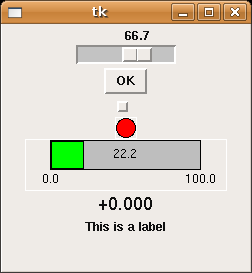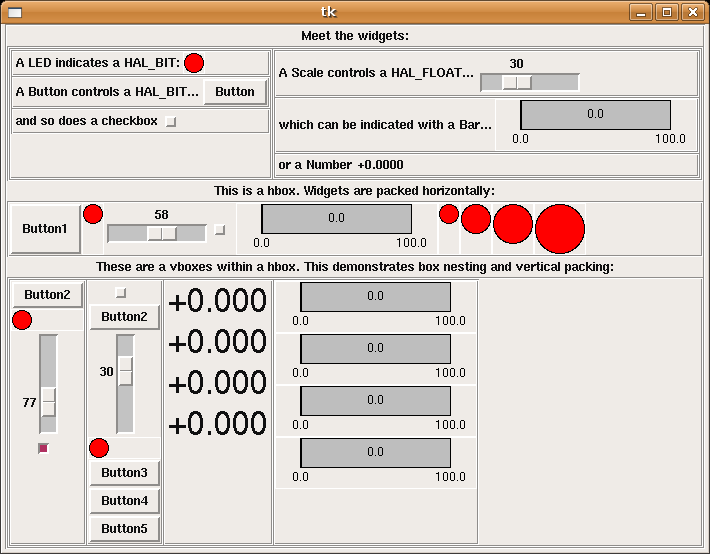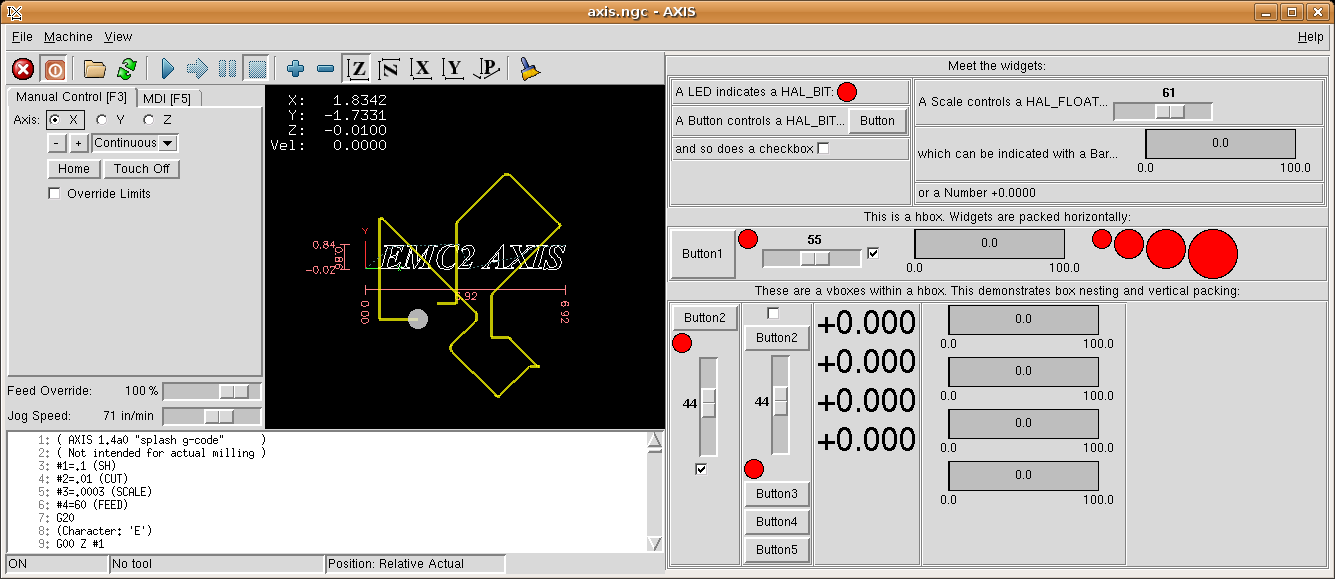Since last Monday, I've been adding to the range of available pyVCP widgets:
Spinbox:

Jeff Epler suggested that my initial 'jognumber' would be better implemented with a Tkinter spinbox. It sets the value of a FLOAT by either pressing the up and down arrows, or using the mouse-wheel.
Radiobutton:

This widget creates a number of BIT pins and sets only one of them, corresponding to the checked box, true.
Jogwheel:
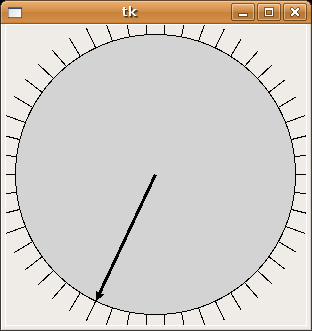
This resembles a real jog-wheel, and outputs a FLOAT count corresponding to the position of the wheel. The wheel rotates either by dragging with the mouse, or by rolling with the mouse-wheel. The number of counts is adjustable, 50 cpr shown in the pic I think. This will be useful for debugging jogwheel code to be used with real jogwheels, but could also find other use in pyvcp panels.
Meter:
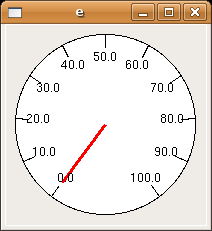
A traditional dial-indicator, used for displaying a FLOAT. The start and end values are user-configurable.
